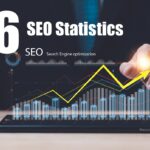In today’s fast digital world, where attention spans are short, a slow website can harm businesses. Research shows that users want websites to load quickly, and anything slower can frustrate them and make them leave. So, businesses must prioritize optimizing website speed to succeed online.
Unnecessary plugins are a big factor in slow websites. These small pieces of code can slow down the loading time. To fix this, website owners should regularly check and remove any plugins that are no longer necessary.
Choosing a good hosting provider is also important. With a reliable hosting solution, businesses can have a fast website that can handle lots of visitors without slowing down.
Mobile responsiveness is crucial too. Since most people use mobile devices to browse the internet, businesses need a website design that loads quickly on mobile. Otherwise, users will have a bad experience and businesses will lose potential customers.
Page speed is essential for a successful website. It improves user experience and helps with search engine optimization (SEO). Google’s research shows that slower loading times lead to more people leaving the website quickly. This can hurt a website’s rankings on search engine results pages.
To optimize website speed, businesses can do a few things. One is to reduce the number of redirects on the website. Too many redirects slow down the loading time and make the user experience worse. By minimizing redirects, businesses can make the website faster and easier to use.
Enabling browser caching is another technique that helps. By storing frequently accessed information locally, browsers can load pages faster, giving users a better experience. This also reduces the server’s workload and makes it easier to find information quickly.
Content Delivery Networks (CDNs) are also helpful. They host and deliver static content, like images and videos, from servers that are closer to the user’s location. This reduces the distance the data has to travel, making the website load faster and giving users a smoother experience.
Mobile responsiveness is not just important for load times, but for the overall user experience. Websites that adapt well to different screen sizes and resolutions make a good impression and make it easy for users to navigate and interact with the content.
There are many factors that affect page speed. Images, videos, plugins, and coding can all impact website performance. To fix these issues, businesses can compress images using different techniques. This makes the file sizes smaller without losing visual quality, resulting in faster load times.
Loading CSS and JavaScript files separately from the main content can also help. This makes the browser render the page faster, giving users a smoother experience.
To measure and improve page speed, businesses can use tools like Google PageSpeed Insights. This tool is free and gives suggestions on how to make the website faster. By following these suggestions, businesses can make informed decisions on how to improve their website speed.
Minifying CSS, JavaScript, and HTML files is another strategy. This means removing unnecessary characters, spaces, and line breaks from these files, making them smaller and faster to load.
Faster load times have many benefits. Search engines like Google consider page speed when ranking websites. Websites that load quickly are more likely to rank higher in search engine results, giving businesses more visibility and organic traffic.
Businesses should regularly check and deactivate outdated or poorly maintained plugins. These plugins can slow down the website and may have security problems. By keeping plugins up to date and removing ones that are not needed, businesses can have a fast and secure website.
In conclusion, optimizing website speed is crucial for success online. By removing unnecessary plugins, choosing a good hosting provider, prioritizing mobile responsiveness, and using optimization techniques, businesses can improve their website’s performance. This will reduce bounce rates and increase user engagement. Faster load times not only improve user experience, but also help with search engine rankings, driving more traffic and customers to businesses in the competitive digital world.










